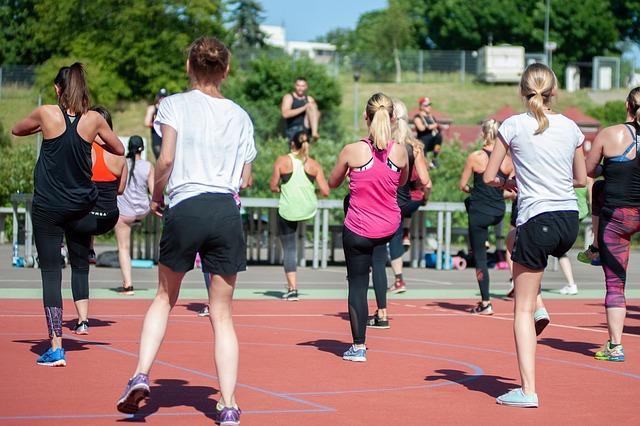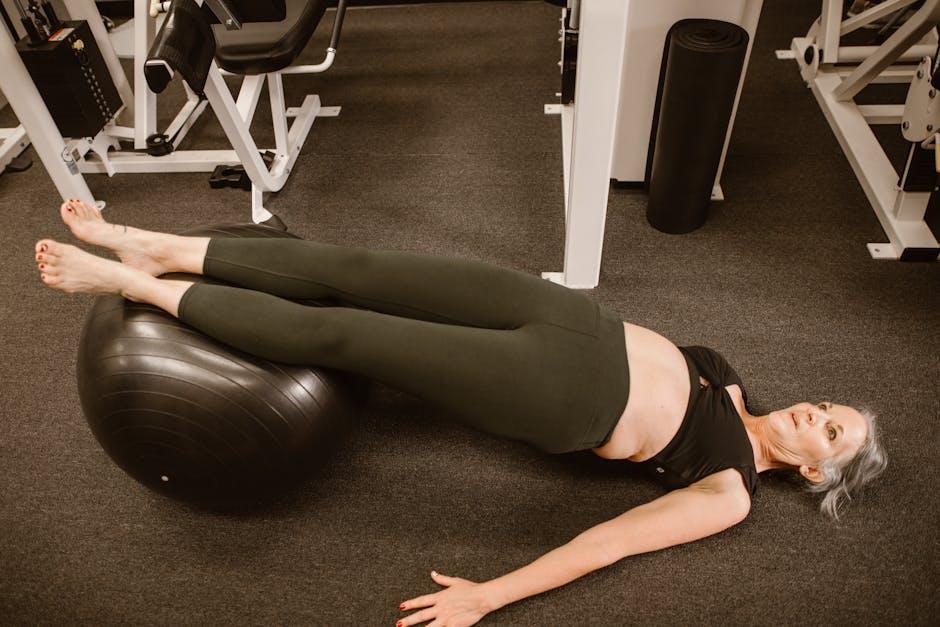As the sun sets on one chapter of life, a new dawn often brings its own set of challenges. For many women, menopause marks a time of significant transformation, accompanied by a series of unwelcome companions—hot flashes. These sudden waves of heat can disrupt daily routines and disturb the tranquility of restful nights. Yet, amidst the discomfort, there lies a beacon of hope in the form of physical exercise. This article delves into a range of exercises specifically designed to reduce the frequency and intensity of hot flashes, offering a natural, empowering path to reclaiming comfort and balance. Whether you’re a fitness enthusiast or a beginner, these strategies invite you to embrace movement as a tool for navigating this pivotal life transition with grace and resilience.
Understanding the Science Behind Hot Flashes
Hot flashes, those sudden and often overwhelming sensations of heat, are a hallmark of menopause and are rooted in the complex changes occurring in a woman’s body during this phase. At the core of these changes lies the fluctuating levels of estrogen, a hormone that plays a crucial role in regulating body temperature. As estrogen levels decline, the body’s internal thermostat, located in the hypothalamus, becomes more sensitive to even slight changes in body temperature. This sensitivity triggers the body’s cooling mechanisms, such as sweating and increased blood flow to the skin, resulting in the characteristic sensation of heat.
Understanding this biological process can help in identifying effective strategies to manage these symptoms. Exercise is one such strategy that can help mitigate hot flashes by promoting overall hormonal balance and improving the body’s ability to regulate temperature. Engaging in regular physical activity enhances circulation, reduces stress, and promotes the release of endorphins, all of which can contribute to fewer and less intense hot flashes. Consider incorporating the following exercises into your routine:
- Aerobic exercises like walking, swimming, or cycling can boost cardiovascular health and improve mood.
- Strength training helps in maintaining muscle mass, which can be beneficial as muscle mass naturally declines with age.
- Yoga and tai chi focus on breathing and relaxation techniques, reducing stress levels that may exacerbate hot flashes.
By embracing these activities, you not only tackle hot flashes but also foster a holistic approach to well-being during menopause.

Effective Exercise Routines to Alleviate Symptoms
Incorporating a regular exercise routine can be a powerful ally in managing menopausal symptoms, particularly hot flashes. Engaging in activities that boost cardiovascular health and promote relaxation can help maintain a balanced body temperature and enhance overall well-being. Here are some effective exercises to consider:
- Yoga: This gentle practice not only improves flexibility and strength but also aids in stress reduction. Focus on poses that encourage deep breathing and relaxation, such as the child’s pose and cat-cow stretch, which can help soothe the nervous system.
- Walking: A simple, low-impact activity, walking helps regulate body temperature and improves circulation. Aim for a brisk pace to get the heart rate up, while allowing time to enjoy the calming effects of nature.
- Swimming: The cooling nature of water makes swimming an ideal exercise for reducing hot flashes. It provides a full-body workout without putting stress on the joints, making it perfect for maintaining fitness during menopause.
- Strength Training: Building muscle mass not only supports bone health but also boosts metabolism. Use light weights or resistance bands to perform exercises like squats and lunges, ensuring a balanced approach to physical health.

Incorporating Mind-Body Techniques for Relief
Mind-body techniques can be a powerful ally in alleviating the discomfort of hot flashes. These practices focus on fostering a harmonious connection between your physical and mental state, potentially reducing the frequency and intensity of hot flashes. Integrating these practices into your daily routine can not only provide relief but also promote overall well-being.
- Mindful Breathing: Engage in deep, slow breathing exercises to help calm the nervous system. Focus on inhaling deeply through your nose, holding the breath for a few seconds, and then exhaling slowly through your mouth. This can be particularly effective during the onset of a hot flash.
- Progressive Muscle Relaxation: This involves tensing and then slowly relaxing each muscle group, starting from your toes and working up to your head. This practice can help you become more attuned to the tension in your body, releasing stress that might contribute to hot flashes.
- Guided Imagery: Close your eyes and visualize a serene and calming place, like a beach or forest. This technique can help shift your focus away from discomfort and towards tranquility, aiding in the reduction of hot flash symptoms.

Expert Tips on Staying Consistent and Motivated
Staying consistent and motivated during your menopause exercise routine can be challenging, but with a few strategic tips, you can maintain momentum and see results. Begin by setting realistic goals that align with your lifestyle and physical capabilities. Break these goals into smaller, manageable tasks to avoid feeling overwhelmed. Celebrate each milestone, no matter how small, to keep your motivation high.
- Create a schedule: Establish a regular workout schedule that fits into your daily routine. Consistency is key, so try to work out at the same time each day.
- Find a workout buddy: Exercising with a friend can make your sessions more enjoyable and hold you accountable.
- Mix it up: Incorporate a variety of exercises to prevent boredom and keep your body challenged. Try yoga, swimming, or brisk walking to reduce hot flashes.
- Track your progress: Use a journal or an app to track your workouts and improvements. Seeing how far you’ve come can be incredibly motivating.
- Stay positive: Focus on the benefits of exercising, such as improved mood and reduced hot flashes, rather than any temporary discomfort.
Remember, consistency doesn’t mean perfection. There will be days when you miss a workout or feel less motivated, and that’s perfectly okay. The key is to get back on track and keep moving forward.








